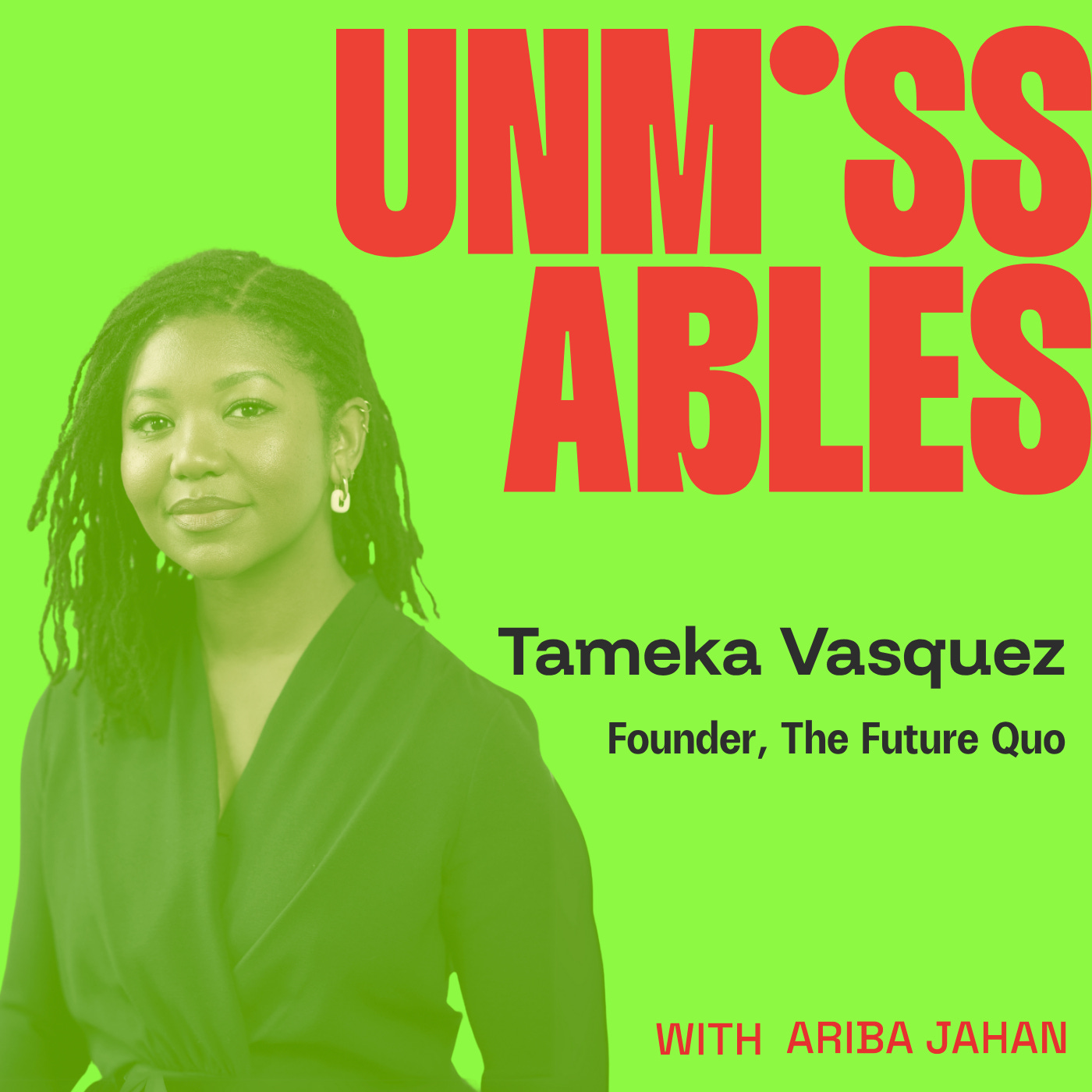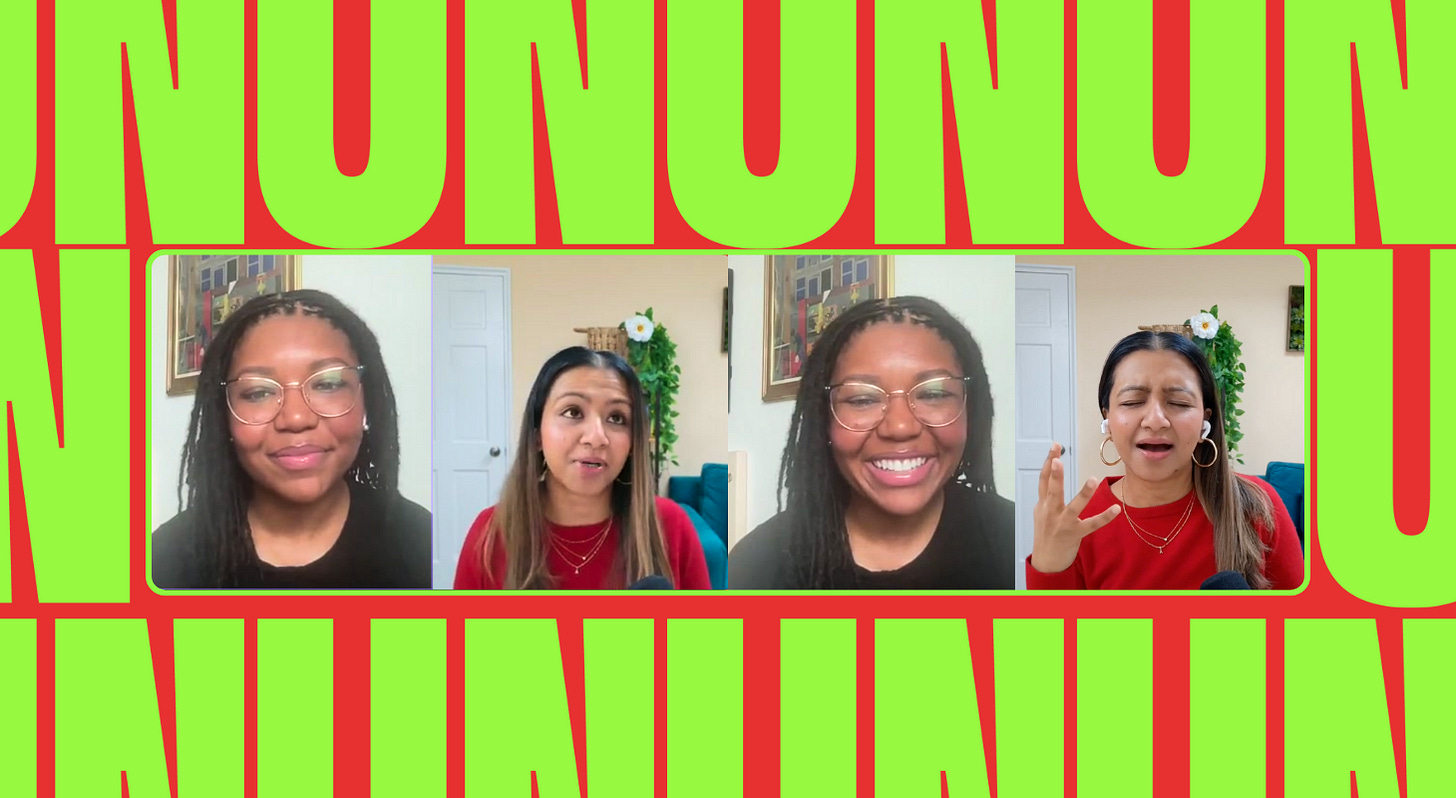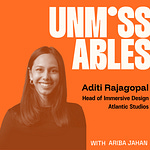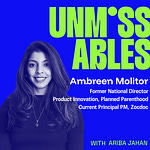Most companies are stuck toggling between reacting to the moment and chasing the next big thing. Tameka Vasquez helps them pause, zoom out, and build strategy that doesn’t just respond, but reimagines.
In this episode, we unpack what futures thinking actually looks like in practice: how to build clarity inside complexity, what makes vision operational (not just aspirational), and why tiny shifts—not big bets—are what shape tomorrow.
Listen Now
Spotify || Youtube || Apple Podcast
Tameka Vasquez is a futurist, strategist, keynote speaker, and educator. She’s the Founder and Principal of The Future Quo, an advisory firm that helps executive teams break free from the status quo and shape new visions for the future.
Her work blends systems thinking, storytelling, and strategic foresight—often at moments of inflection or transformation. Before launching her own practice, she served as the first Head of Marketing at Sidewalk Labs (a Google company focused on the future of cities) and spent over a decade leading brand and growth strategy for global tech firms.
Tameka teaches at Columbia University and has delivered talks for organizations like NASA, Aspen Institute, NYU’s Urban Future Lab, and the Association of National Advertisers.
What we explore in this episode
Why strategic foresight isn’t about prediction and what it’s actually for
How trend-chasing leads to mimicry, not momentum
The cost of working without vision, and how it shows up day-to-day
Why futures thinking belongs in the room, not in the research deck
How to design for possibility when urgency is loud
What LEGO got right and what your team can learn from it
The power of narrative as an operating system
Why “nonlinear” careers are often the most aligned
How to use futures thinking even if you’re not a futurist
Follow along
00:00 – Welcome + Meet Tameka Vasquez
02:20 – How Tameka Found Her Way to Futures Work
04:30 – What 'Futures Thinking' Means
11:20 – Democratizing the Practice of Foresight
16:00 – Tameka’s Approach: From Trends to Narrative
23:45 – Vision Gaps in a Reactive World
24:00 – The LEGO case study: foresight in action
31:00 – AI, Urgency, and the Risk of Reactive Thinking
40:45 – Making Futures Thinking Practical
46:15 – Multiplicity, Reinvention, and Nonlinear Careers
49:30 – Unmissable Signals & Closing Reflections
Some takeaways
Futures thinking isn’t prediction. It’s a mindset for sharper, more intentional decision-making, anchored in clarity, not certainty.
Vision is a leadership practice. When organizations treat it like a tagline or a mission only for PR, they drift. When they revisit and operationalize it, they unlock focus.
Big bets don’t build momentum, tiny shifts do.Futures work isn’t always about bold bets, it often starts with the questions you ask on a Tuesday. Tameka breaks down how one behavioral shift at a time can lead to long-term transformation.
LEGO’s comeback with foresight. Strategic foresight helped them reconnect to purpose, simplify their portfolio, and build with conviction.
Speed isn’t clarity. Many teams operate with urgency but lack alignment. Futures work slows the reaction cycle long enough to ask the right questions.
Narrative is infrastructure. It’s not just messaging, it’s how teams make decisions, set priorities, and navigate uncertainty together. Futures thinking helps connect actions to a longer arc.
Futures thinking isn’t reserved for “futurists.” Designers, product leaders, and strategists can all use foresight tools to design more intentional outcomes. It works even better when it’s not left at a theoretical and speculative level.
Reacting to trends ≠ shaping the future. Trend-chasing leads to mimicry. Strategic foresight asks: what’s emerging, and what do we want to do with it?
PwC’s 2024 CEO survey revealed 45% of CEOs doubt their own business model’s future. That’s a leadership and foresight gap, not a tech one.
Multiplicity is a strength. Tameka shares how her nonlinear path across marketing, urban innovation, and academia helped her design better futures.
Signals to watch
Return-to-office mandates as cultural signal, not productivity logic.
What narratives are being reasserted? What are we being told about “value” or “presence”?AI as mandate vs. mission.
Brands that implement GenAI without clarifying its purpose or value often default to reactive use. Watch for the orgs embedding it with clarity, intention and responsibility.Design fiction and prototyping futures.
More orgs are using speculative design to visualize “preferred futures”, especially in climate, urban planning, and education.
What to try this week
Revisit your team’s vision, not as a statement, but as a tool. Ask: Is this shaping our decisions today?
Start your next planning session with this question: What do we want to be true in 3 years and what signals are we seeing now?
Try writing a short narrative (2–3 paragraphs) describing a future where your current challenge is resolved. What got you there?
Mentioned on the episode
Where to find Tameka Vasquez
LinkedIn : /tamekavasquez
The Future Quo: https://www.thefuturequo.com
Where to find Ariba Jahan
Linkedin: /aribajahan/
Instagram: http://www.instagram.com/ariba.jahan
Youtube: https://www.youtube.com/channel/UC61NDFgqsM02-wtE1PrZOsw
Thanks for tuning in!
Would love to hear from you, tell us what this episode made you think? Did you try one of the exercises before?















Share this post